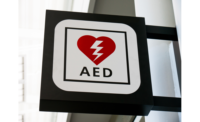Improving public alerts in emergency situations
New standards offer guidelines for emergency response

People at risk, be it from natural disasters, terrorist attacks or other incidents in daily life, need to be able to take appropriate safety actions based on a proper understanding of the level and nature of the emergency.
Two recently published ISO standards will help organizations responsible for public warning at the local, national or international level to put in place a structured emergency response informing a targeted risk population.
ISO 22322:2015, Societal security – Emergency management – Guidelines for public warning, provides guidelines for developing, managing and implementing public warning before, during and after incidents occur.
Haruo Hayashi, Project Leader of ISO 22322, explains: “Time to communicate is limited and often a specific message involving practical action has to be disseminated to a large group. Simple procedures that send the message efficiently and create the desired response can save lives, protect health and prevent major disruptions.”
The purpose of an alert is to attract the attention of people in a developing emergency situation by stimulating the auditory, visual and tactile senses so that they will take appropriate safety actions and seek additional information.
The warning dissemination function should ensure that the alert gains maximum attention, taking into consideration the characteristics and conditions of the people at risk, including the requirements of vulnerable groups. ISO 22322 gives advice on aspects of public warnings, for example helping to select a warning channel such as TV, radio, telephone, newspapers or loudspeakers to disseminate the information.
ISO 22324:2015, Societal security – Emergency management – Guidelines for colour-coded alerts, provides guidelines for the use of colour codes to inform people at risk, as well as first-response personnel, about danger and to express the severity of a situation.
Colour-coded alerts are used to notify people of status changes on a safety or danger continuum and help them take appropriate actions. ISO 22324 will lead to a better understanding of colour-coded alerts by reducing confusion and prompting more appropriate responses in an emergency situation.
ISO 22324 describes various colours and how they should be used. For example:
- Red is associated with danger and should be used to notify people at risk to take appropriate safety actions immediately
- Yellow is associated with caution and should be used to notify people at risk to prepare to take appropriate safety actions
- Green is associated with a safe status and should be used to notify people at risk that no action is required
In addition, black, purple, blue and grey may be used to provide additional messages, such as fatal danger, supplementary information, or when no information is available. For example, meteorological services use coloured maps as early warning systems when announcing a storm and apprizing the population of the level of danger.
Stefan Tangen, Convenor of the communication group of ISO/TC 292, stated: “ISO 22322, which provides guidelines for public warning, can be used in combination with ISO 22324 and other standards that are under development on topics such as business continuity management, organizational resilience, security management and fraud countermeasures and control.”
ISO 22322 and ISO 22324 were developed by ISO technical committee ISO/TC 292 on security and resilience, whose secretariat is held by SIS, the ISO member for Sweden. The standards can be bought from your national ISO member or through the ISO Store.
Looking for a reprint of this article?
From high-res PDFs to custom plaques, order your copy today!




